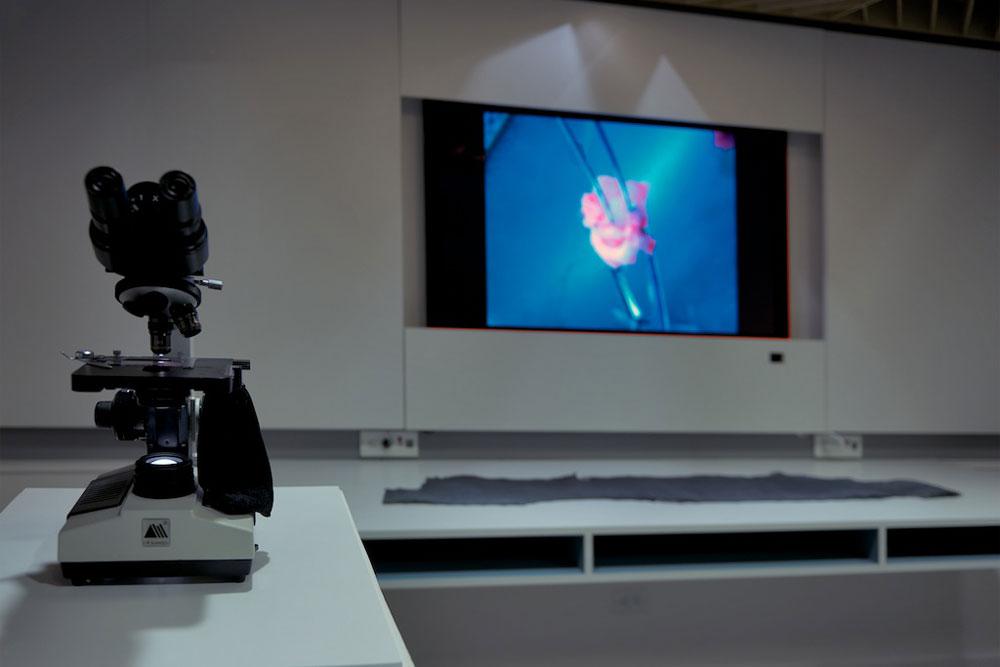Enter Grunt Gallery these days and you’re likely to be greeted with a constant, creaking groan. The source of the sound—which at first seems to be a recording—is Jonathan Villeneuve’s electromechanical work Do The Wave. The large-scale sculpture consists of a long row of two-by-fours running almost the length of the gallery space and standing 10 feet tall. At the base, wooden troughs separate each board; as the planks rhythmically move in and out, creating a wave-like ripple, they simultaneously rub and grind the troughs to produce the sound. The sculpture almost seems to be alive, as motion detectors activate the piece in response to the viewer’s presence.
Moving behind the row of rippling wood is like stepping into the interior of an enigmatic machine. The bright gallery lights are filtered through the slats and the mechanics of the sculpture are revealed. Any voices and movements on the other side are slightly muffled. Although the function of this machine is not clear, it opens up one’s imagination and evokes the potential existence of the construction as a functioning entity in and of itself.
In the back gallery, David Khang’s Amelogenesis Imperfecta (How Deep is the Skin of Teeth) (which closed on September 22) transformed its space into a small laboratory. A flatscreen hung on the back wall played a slide show of images from Khang’s attempt to grow tooth enamel into sculptural forms during an artist residency in Australia. The images captured various tools and stages of the process, as well as cells mounted on microscope slides and etched with images of sharks.
On a shelf below the screen, the thick hide of a dogfish shark was laid out on display as if part of a science exhibit. Projected from the ceiling onto what appeared to be a second flatscreen was an animated video of a spinning molar that transformed into a swimming shark, which eventually swam forward and “swallowed” the viewer. However, the screen turned out to be a small pool of inky water, the depths of which were unknown. Lastly, a microscope was set up with a single slide of cells derived from Khang’s attempt to grow enamel. Engraved onto the slide and visible only beneath the microscope, Khang posed the question, How deep is the skin of teeth?
In an accompanying essay, physician, curator and critic Kóan Jeff Baysa reveals the connection between the distinct elements of Khang’s installation. Enamel is the hardest material produced by the human body, and it is similar to a protective material that covers sharks. Khang’s experiment with the thinness of this coating, or the skin of teeth, draws attention to a long history intertwining humans and sharks, wherein sharks have been hunted for the ostensible health benefits associated with ingesting their various parts, among other reasons. Even though Khang was unable to successfully grow enamel in the way he had wished, his work prompted consideration of what exactly constitutes the smallest unit of life. In turn, thoughts were provoked as to how one may harvest or produce a natural material by artificial means.
Both Jonathan Villeneuve and David Khang are capable of transforming galleries into spaces of artistic and scientific experimentation. Although very different on the surface, both of their bodies of work highlight the similarities that unite art and science—in particular, a spirit of inquiry and curiosity fuelled by the search for an underlying truth or principle.









